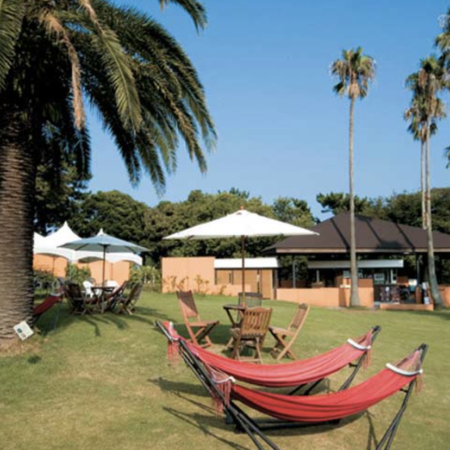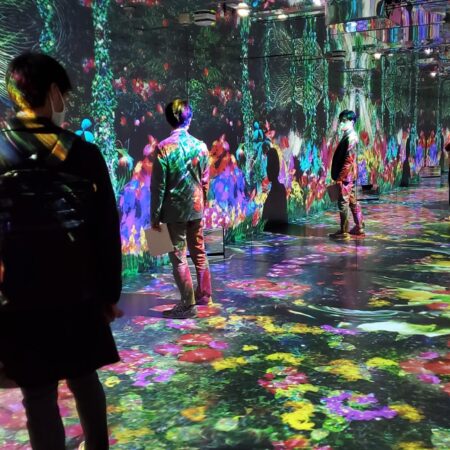Ōwakudani Fuji Hakone Izu National Park

In the lush greenery of Hakone, Ōwakudani looks completely different from the others.
Reddish brownfield and dead trees……The smell of sulfur all over. A desolate landscape spreads out.
However, this is also the appearance of the living earth. Feel the breath of the earth as it is.

Owakudani was formed by the collapse of Kamiyama (elevation 1,438m) due to an eruption about 3,000 years ago.
Even now, eruptions containing hydrogen sulfide are rising from everywhere. As a result, the trees have withered, and the rocks have become clayey, and you can see the reddish-brown mountain surface. You can observe the dynamic activity of the volcano, such as the boiling water kettle and the fumaroles that blow up white smoke.
Plants that are resistant to high soil temperatures and acidic soil inhabit around the eruption area called the Sulfur Wilderness. Another characteristic of Owakudani is that the closer you are to the eruption area, the more acidic plants you can see. (Hydrangea hirta, Panicled hydrangea, Japanese knotweed, Japanese knotweed)
The occurance of Hakone volcano

Hakone volcano is characterized by a caldera with a diameter of about 11 km. Caldera is a Portuguese word for a large pot, and there are Sengokuhara and Lake Ashi right there.
The Hakone volcano caldera gradually took on its current form due to repeated large eruptions that occurred around 200,000 years ago and around 80 to 60,000 years ago.
In the middle of the pot are the mountains called Chuo Crater Hill, such as Kamiyama and Komagatake, and Owakudani is on the hillside of Kamiyama.
| 650,000-230,000 years ago | A volcanic group consisting of several volcanoes were formed |
|---|---|
| 230,000-130,000 years ago | A series of large eruptions formed a number of small calderas. |
| 130,000-80,000 years ago | Small calderas gathered together to form the big caldera you can see now. Lava domes such as Byōbusan were created among those calderas. |
| 80,000-60,000 years ago | A series of large eruptions formed several small calderas. |
| 60,000 years ago-present | Kamiyama and Futagoyama were formed in the newly created caldera. |
Hakone volcano is still active today

Hakone’s volcano is a fascinating place in Hakone. Owakudani, which erupted at the end of Hakone volcano about 400,000 years ago, still erupts sulfur and water vapor at around 100 ° C.
Most of this white smoke is water vapor. On top of the odor of the hydrogen sulfide, and even in Hakone surrounded by greenery, plants and rocks are melting in this area.
If you look out over Owakudani from the ropeway, there are a lot of landslides in the white smoke, and it is one of the few places where you can observe the geothermal activity and the action of chemical substances in detail how the movement of the earth appears on the surface of the earth.
It is a representative landscape of Japan where you can see the magnificent male figure of Mt. Fuji against the background of the white smoke that erupts.
The eruption of Ōwakudani and earthquakes
When a volcano is alive, it means an eruption, but the explosion at Hakone volcano occurred about 3,000 years ago.
The landslide caused by the explosion of Kamiyama blocked Hayakawa and created Lake Ashi. The Hakone earthquake is volcanic, and the depth of the epicenter is often around 1km. The Hakone Volcano Observatory was built by Kanagawa Prefecture in 1959.
Sight seeing tips for Ōwakudani
Important notice when you visit there
| Be cereful for volcanic gas | In the Ōwakudani area, volcanic gas (hydrogen sulfide, sulfur dioxide) that is harmful to the human body is generated. Please leave the spot immediately if you sense an intense smell or irritation in your eyes, nose, or throat because it is very dangerous to your body. |
|---|---|
| High health risks on who are listed if they step in | Those who have asthma, respiratory problems, heart problems, or are not feeling well. |
You can observe volcanic gas 24 hours a day. When the volcanic gas eruption is particularly strong, the passage of the natural research road may be closed.
| Alert level concentration by volcanic gas | Sulfur dioxide(SO2)…2.5ppm, Hydrogen sulfide(H2S)…30.0ppm |
|---|---|
| Closing level concentration by volcanic gas | Sulfur dioxide(SO2)…5.0ppm, Hydrogen sulfide(H2S)…80.0ppm |
- Owakudani is 1,040m above sea level. Fog happens all the time and even in summer it is chilly on cloudy and rainy days, and long sleeves and rain gear are recommended. Since there are many days when strong winds blow, we recommend that you bring warm clothes or something to wear on top.
- We will close the garden road when there is a risk of debris flow due to a typhoon or heavy rain. (Hourly rainfall: 20 mm or more, continuous rainfall: 50 mm or more)
- In Owakudani, in preparation for rising volcanic gas concentration and sediment-related disasters, we have set up the “Owakudani Garden Safety Measures Council” by the people concerned and are working on safety measures.
Parking information of Ōwakudani
| Opening hours | 9 am-4 pm ※ the exit of the parking lot will be closed at 4:30 pm. please be minded. ※we may close the parking lot early in case of bad weather. |
|---|---|
| Fees | Large cars/1,550 yen Regular cars/520yen |
Contact
Ōwakudani information center
1251 Sengokuhara, Hakone, Ashigarashimo District, Kanagawa 250-0631
TEL:0460-84-5201
Opening hours:9am-5pm
Details
| Access | From Odawara Station / Hakone Yumoto Station, take the Izu Hakone Bus bound for Kojiri Hakoneen and get off at “Owakudani”. And take Hakone-Tozan train and get off at ”Gora station”. And take Hakone-Tozan cable car and get off at “Souunzan”. Finally, take Hakone ropeway and get off at “Owakudani Station” |
|---|






